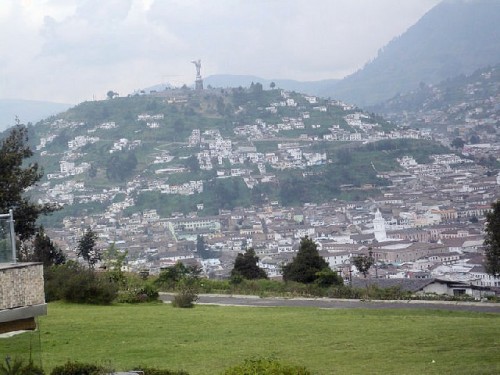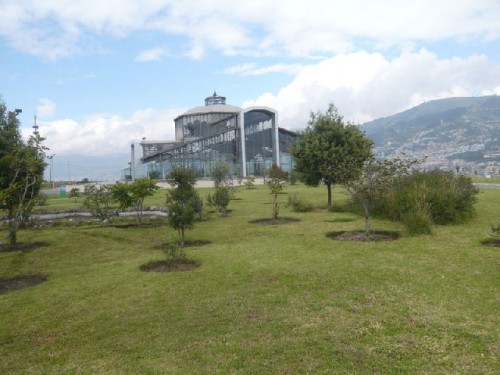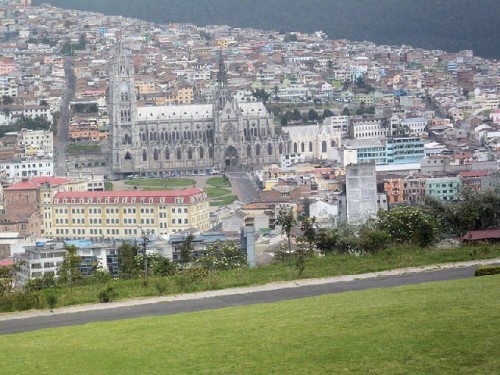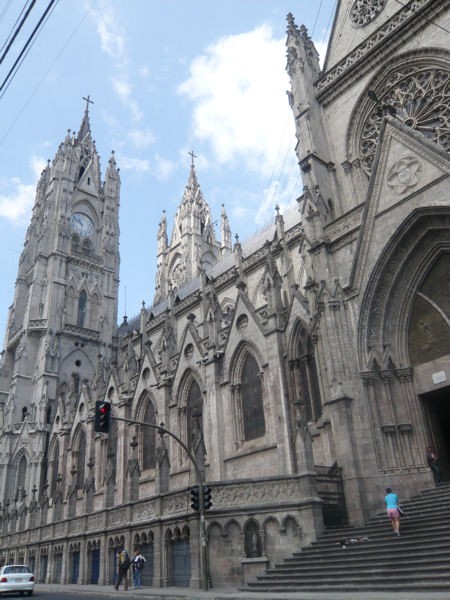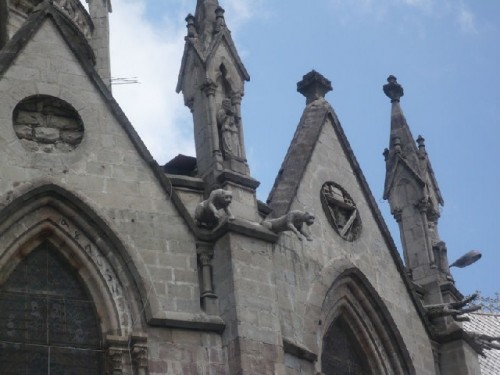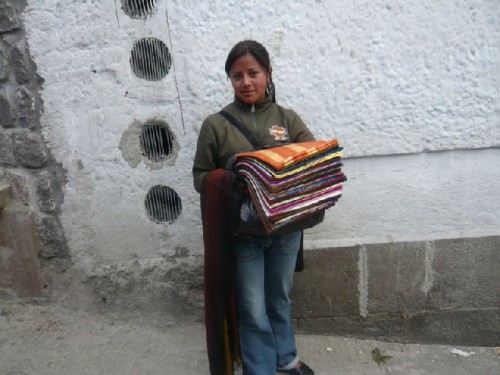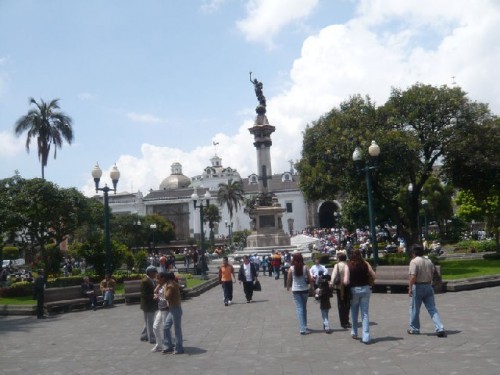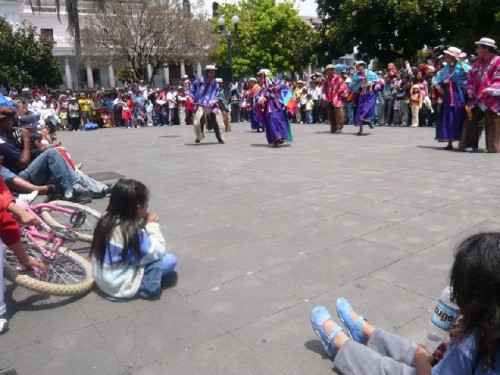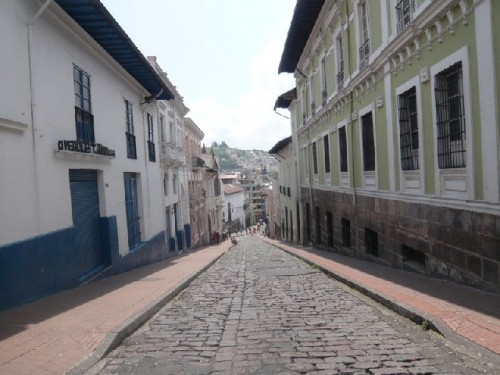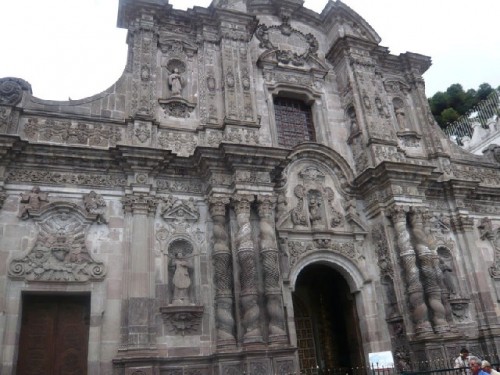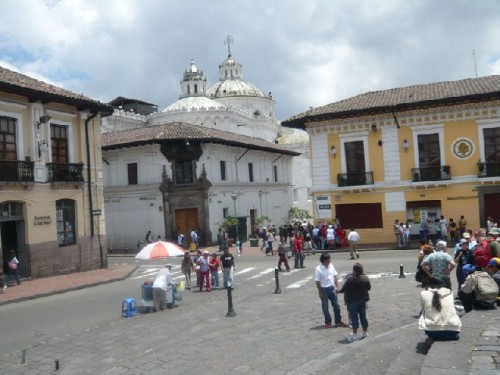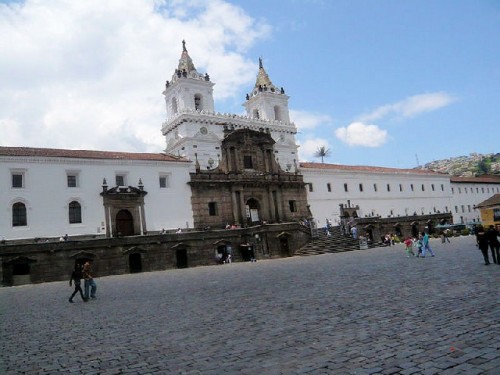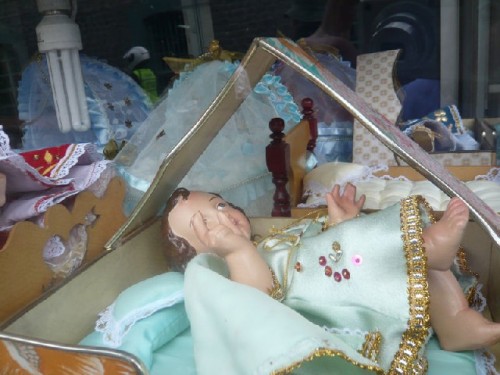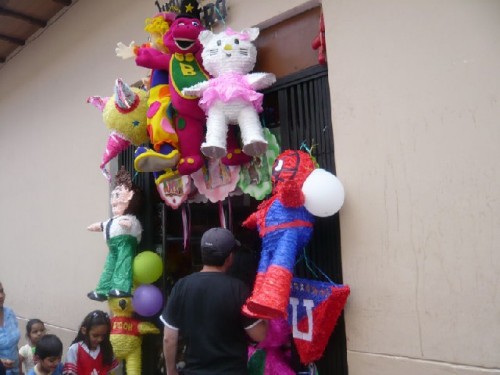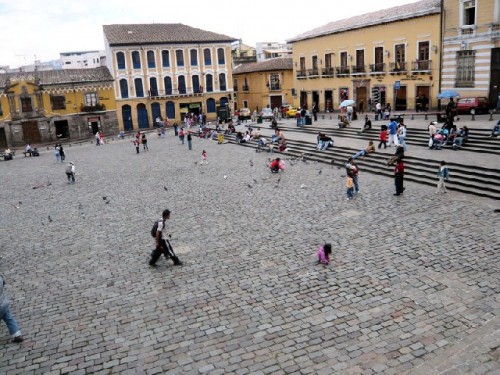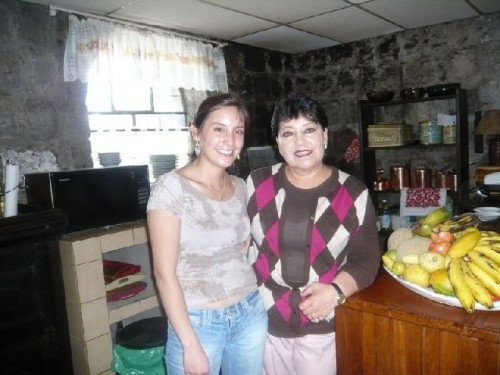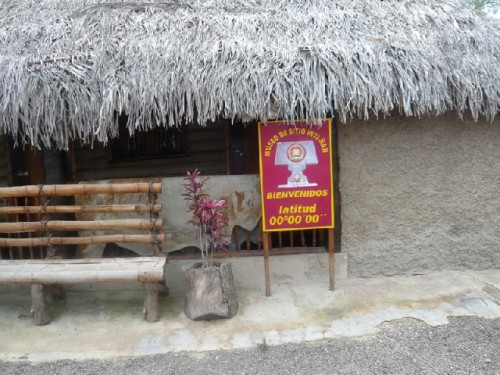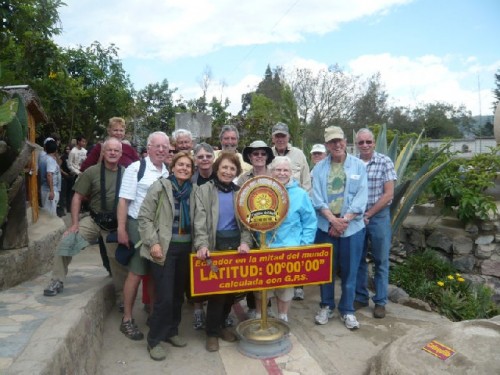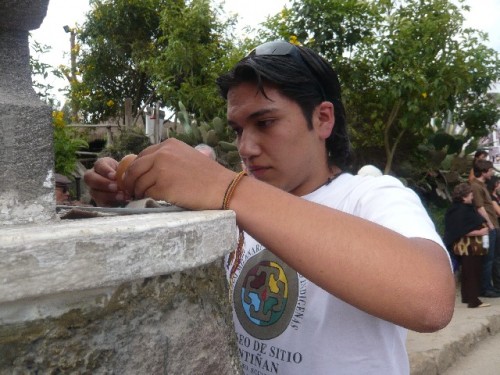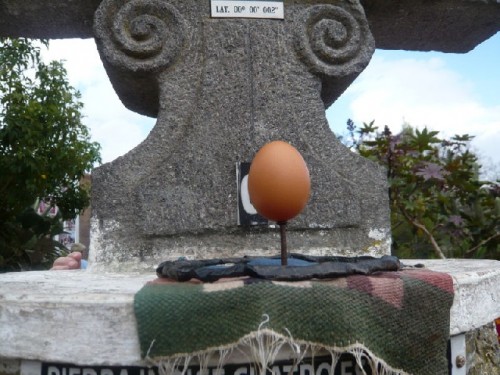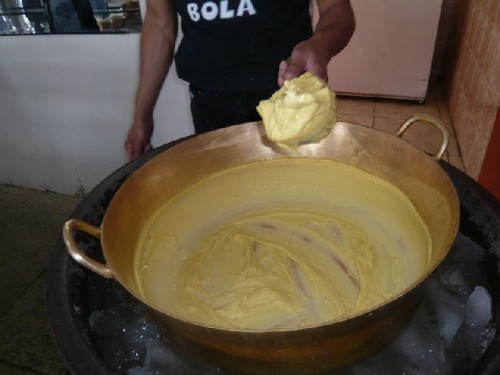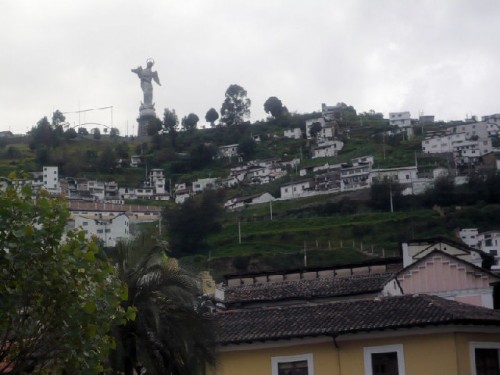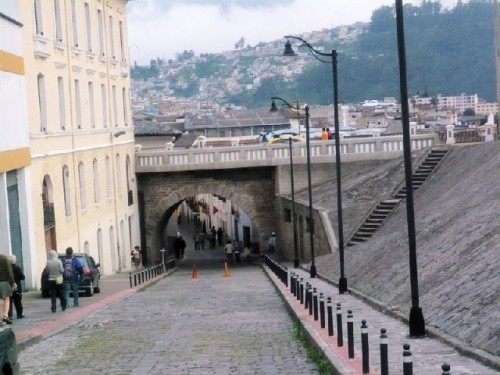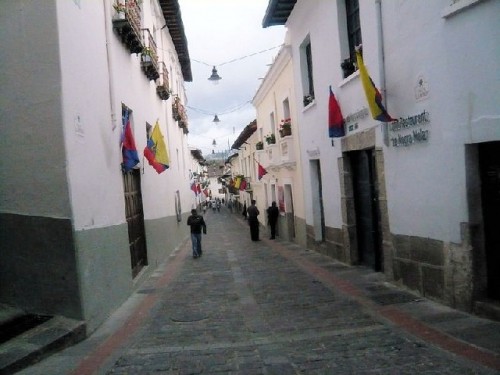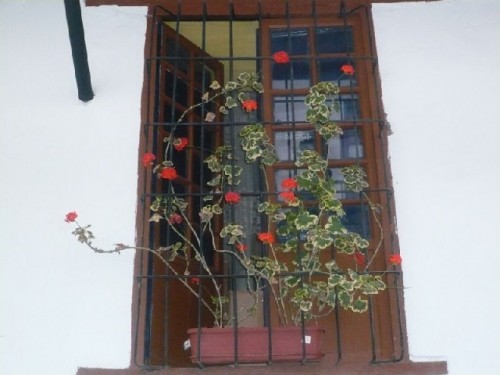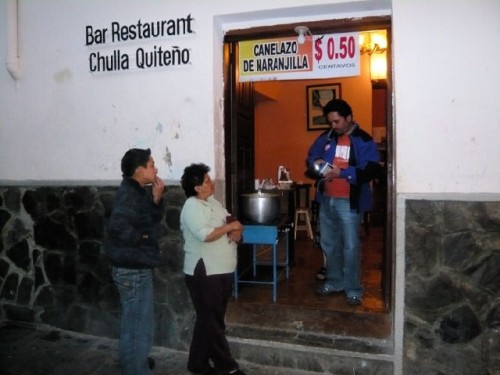Ecuador: Part One
Quito, the Colonial Capital
By: Zeren Earls - Mar 25, 2009
My annual quest to discover a country I have not seen before took me to Ecuador from February 21to March 7, 2009. My sister, who lives in Istanbul, joined me on this trip organized by Overseas Adventure Travel (1-800-955-1925). Leaving Boston's snowy landscape behind, we flew to Miami on American Airlines to connect to a four-hour flight to Quito.
As we descended to Quito airport at 10 pm, the pilot announced 62º F weather, a welcome contrast to Boston's 26º when we departed. Although there is no time difference between Boston and Quito, the altitude change is considerable at 9300 feet above sea level. To prevent the effects of altitude sickness, such as fatigue and headache, we took medication on the day of our departure, as well as malaria pills in anticipation of our trip to the Amazon. To travel to this part of Ecuador, we also had to have yellow fever vaccination.
Quito
The airport gave the impression of a quaint, small town rather than of a capital city with a population of almost two million. It seemed relatively quiet; one small luggage carrousel was in operation. We met our local guide, Roberto, who welcomed us to his country with a warm smile. The quaint feeling also permeated our centrally located hotel in the old town. We received a large room key, accompanied by the remote control for the TV, a highly valued item to be returned to the desk at the end of our stay. We dropped off to sleep at midnight.
The following day, a Sunday, coincided with carnival in Ecuador, where 98% of the population is Catholic. There seemed to be hardly any traffic on the streets. People were either at church or had left town for the seashore on account of the holiday. Our tour of the city started at Itchimbia Park, which has a fine panoramic view of Quito perched on the eastern slopes of Volcan Pichincha, an active volcano. The city's horizontal layout from above prominently displayed the 148-foot winged steel statue of the Virgin of Quito, in addition to the Basilica and the multitude of other church domes and towers. Downtown Quito boasts fifty-seven churches.
Crystal House is the new cultural and exposition center located in Itchimbia Park. The all-glass building amidst multi-hued flower beds symbolizes contemporary Quito, as opposed to the Old Town, home to colonial architecture. A brief stop in front of the congress building revealed a mural depicting the history of Ecuador. Carved out of local stone in 1976, the story is told in relief from left to right, beginning with the arrival of the Incas at the end of the 15th century, followed by Spanish soldiers on horses in 1532 and colonization. It continues with the arrival of scientists in 1776 to prove the earth is round and ends with Simon Bolivar on horseback, the liberator of Ecuador from Spanish reign in 1822.
Ecuador became a republic in 1830; its national flag of yellow, blue and red with a central emblem is visible throughout the capital city. Spanish and Quechua, the language of the Incas, are the official languages. Taught in all the schools, Quechua is widely spoken among the indigenous peoples and has replaced English as an official language under the current regime of President Rafael Correa.
Quito, which means "center" in Quechua, was named UNESCO's first World Heritage Site in 1978. It is a well-preserved city with magnificent Spanish colonial architecture. The heart of the Old Town is the Plaza de le Independencia, flanked by the Presidential Palace and the Cathedral. Lined with palm trees, the civic square is a hub of activity from political protests to family outings. Carnival festivities filled the air during our visit; spectators circled dancers in colorful costumes, pranksters sprayed one another with shaving cream, while assorted vendors jostled for tourists' attention. Window-shopping introduced us to figures of the baby Jesus, who brings gifts at Christmas instead of Santa Claus.
Invited to a local family's home for lunch, we drove close to the Equator. Our hosts lived next door to the Inti Nan Solar Museum, which we later visited for an experiential understanding of standing at earth's center. Befitting its setting, the house was furnished with country antiques. The lunch table featured bowls of roasted corn and beans to snack on. This turned out to be the custom wherever we traveled; popped or roasted corn preceded the soup course and often embellished it in lieu of croutons. Cream of potato soup, chicken served with fried plantains, broccoli and red cabbage provided a satisfying meal. Fig dessert accompanied by a slice of salty white cheese completed the menu. For drinks we had passion fruit juice or bottled water. Our host spoke only Spanish, but we were able to communicate with the help of her daughter, who knew some English.
The Inti Nan Museum provided a glimpse into the traditional customs of the Andean people dating back to 1875. We walked around bungalows made of palm leaves and hammocks woven from young palm strings. Sleeping in one bed kept everybody warm; guinea pigs were raised as a delicacy. Shrunken human heads were prized as trophies; some continue the tradition with monkey heads.
A straight red line on the ground designates the center of the earth at zero latitude, where several activities demonstrate centrifugal forces at play. Leaves placed in a sink of water on the north side of the line swirl counterclockwise, as opposed to those swirling clockwise when placed on the south side. When the sink is placed right on the line, the leaves are sucked instantly into the drain. Other demonstrations included the easy parting of our clenched fists when we stood on the equator and our loss of equilibrium walking with eyes closed at zero latitude. Balancing an egg with ease on a nail head was the most astonishing experiment of all.
On the way back we stopped at Pomasqui, a town famous for its hand-churned ice cream. We watched sweetened fruit juice and water turn into ice cream as an attendant kept stirring the liquid in a brass bowl placed over chunks of ice and salt. Roberto treated us to two scoops of the ice cream of our choice. We walked out of the shop comparing flavors; mine were blackberry and mango - simply delicious!
During our free time at the end of the day, my sister, Fulya and I walked to the crafts market, which was comprised of narrow alleys lined with small shops. I bought a hand- painted picture frame and a mirror. We had dinner at a restaurant strategically placed to view the surrounding mountains. The city lights below shimmered, disappeared and reappeared as the fog moved through them, providing an ever-changing spectacle.
The hotel in Quito was our home base, where we left our main luggage during our three-day trips with small duffel bags to the Amazon Basin and the Galapagos Islands. This proved to be a good arrangement, as each area's unique climate required different types of clothing: long sleeves and neutral colors for the Amazon; shorts, swimming suit and sandals for the islands. In between trips, we had further opportunities to sightsee in Quito.
One of my memorable experiences in Quito was a visit to Folklore Olga Fisch, a shop with a museum. The Hungarian artist Olga Fisch, the owner, works with indigenous artisans to bridge folk art with traditional fine art. The upstairs is a museum of ethnology depicting the lives of various indigenous communities. The shop's displays include hand-woven rugs, tapestries, baskets, pottery, textiles, jewelry and other one-of-a-kind crafts - a worthwhile stopping place to get an idea of the richness of Ecuadorian handicrafts.
The optional tour of Quito included some jewels of colonial architecture. The Iglesia de La Compania is known as the most lavish of Latin American churches. Built between 1605 and 1765, the Jesuit baroque church is intricate both inside and out, combining Spanish-Moorish motifs with Quiteno colonial art. The altar shimmers in gold; a reputed seven tons of gold leaf cover the interior. In keeping with the church's symmetry, the stairway on the left side is replicated as a painting on the right. Two large opposing paintings at the entrance depict hell on the left and ascension to heaven on the right.
La Ronda is a picturesque slice of colonial Quito dating from 1800, with adobe houses, colorful window frames and doorways splashed with flower pots. We walked down narrow streets of polished cobblestones bordered by restored old houses with Spanish balconies, stopping at a bar to enjoy canelazo, a local drink made by mixing naranjilla fruit juice with fermented alcohol from cane sugar and sprinkled with cinnamon. The potent drink cost all of 50 cents a glass. Ecuador's currency is the same as the US dollar.
Another highlight was dinner at Octava de Corpus on Plaza San Marcos. The owner is a collector of antiques, as well as folk and fine art. The eclectic collection is displayed throughout the beautiful colonial house, with each room exhibiting paintings of a different period, from classical to contemporary. Providing the atmosphere of a private dining room, the elegant table settings all feature bouquets of red roses as center pieces. Dinner began with a complimentary glass of fig-flavored liqueur, the house specialty, and offered a choice of appetizers, main dishes and desserts. My choices were shrimp ceviche - seafood marinated in lemon, orange, tomato juice and sliced onions-, grilled fish and passion fruit cassata.
The Amazon Basin was our next travel destination. To get there we flew from Quito over the eastern slopes of the snow-capped Andes to the town of Coca deep in the jungle.
To be continued.


